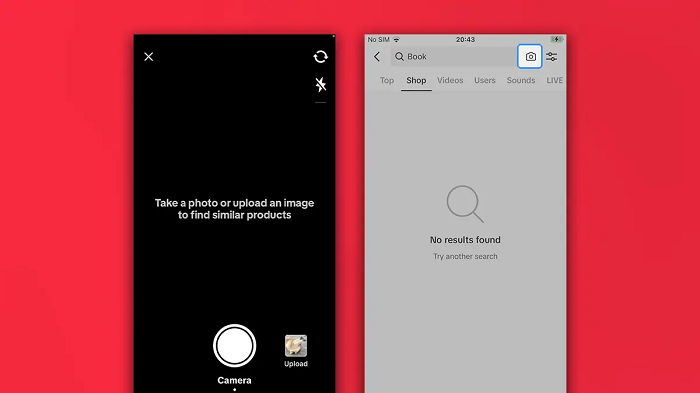Despite various setbacks, TikTok remains determined to make in-stream shopping happen, as it looks to replicate its Chinese market success with Western audiences.
Its latest initiative on this front is a new visual product discovery option, which would enable TikTok users to take a photo of an item, then find similar matches in TikTok Shop listings.

As you can see in this example, the new TikTok image search option, which is being tested in selected markets outside the US, would function similar to image search on Google, or Pinterest’s Lens tool, with users capturing an image of a product, then using that as the basis for their search.
Which could provide more discovery potential, and make TikTok more of a shopping search tool – though the fact that it’s being tested in markets outside the US is relevant, because as noted, while Western users haven’t warmed to in-stream shopping in the app ad yet, many Asian users have, with South East Asian TikTok users rapidly adopting live-stream shopping, similar to their Chinese counterparts.
Which is a strange regional variance. In China, on the local version of TikTok (called Douyin), live-stream commerce is now massive, and is the app’s biggest income stream, by a significant margin. It’s now also seeing solid in-app shopping growth in Singapore, Malaysia, Indonesia, and the Philippines, which reflects the more adaptive approach of Asian markets to online shopping, and the diversification of social apps in usage.
That represents significant opportunity for TikTok, but it really wants to crack the US and EU markets, as a means to provide more revenue share potential, and expand its usage in these regions as well.
But as virtually every social app has now found, Western users are simply not as open to live-stream and in-stream purchase options, due to concerns around safety, quality, and the basic replacement of IRL experiences, which Western consumers still seem to be more attached to than those in other areas.
Indeed, during the COVID pandemic, and the subsequent lockdowns around the world, online shopping skyrocketed in the US, which accelerated the shift away from physical stores by five years within just a few months. The view was that this would exacerbate the decline of physical shopping – but within weeks of the lockdowns being lifted, visits to physical stores returned to basically the same or similar levels to what was seen before the pandemic.
Western audiences seem more tied to their habitual behaviors in this respect, and while online shopping is rising steadily, it hasn’t become the transformative trend that it has in Asian markets, at least not at this stage.
TikTok’s still hoping that it will catch on, and it’s still pushing to shift user behaviors in this respect. And as younger audiences move into higher spending brackets, that’s going to happen either way – but the question is whether TikTok can become the key source of purchases for this audience, or whether other apps will steal its thunder in this respect.
Its cultural presence should hold it in good stead, while data also suggests that more and more young people are using TikTok and IG as search engines over Google, another key behavioral shift in this respect.
Maybe the rise of generative AI will change that again, but TikTok’s still holding out hope that it can make TikTok shopping a thing, and this new search option will be another tool in its growing arsenal to power its eCommerce growth.



